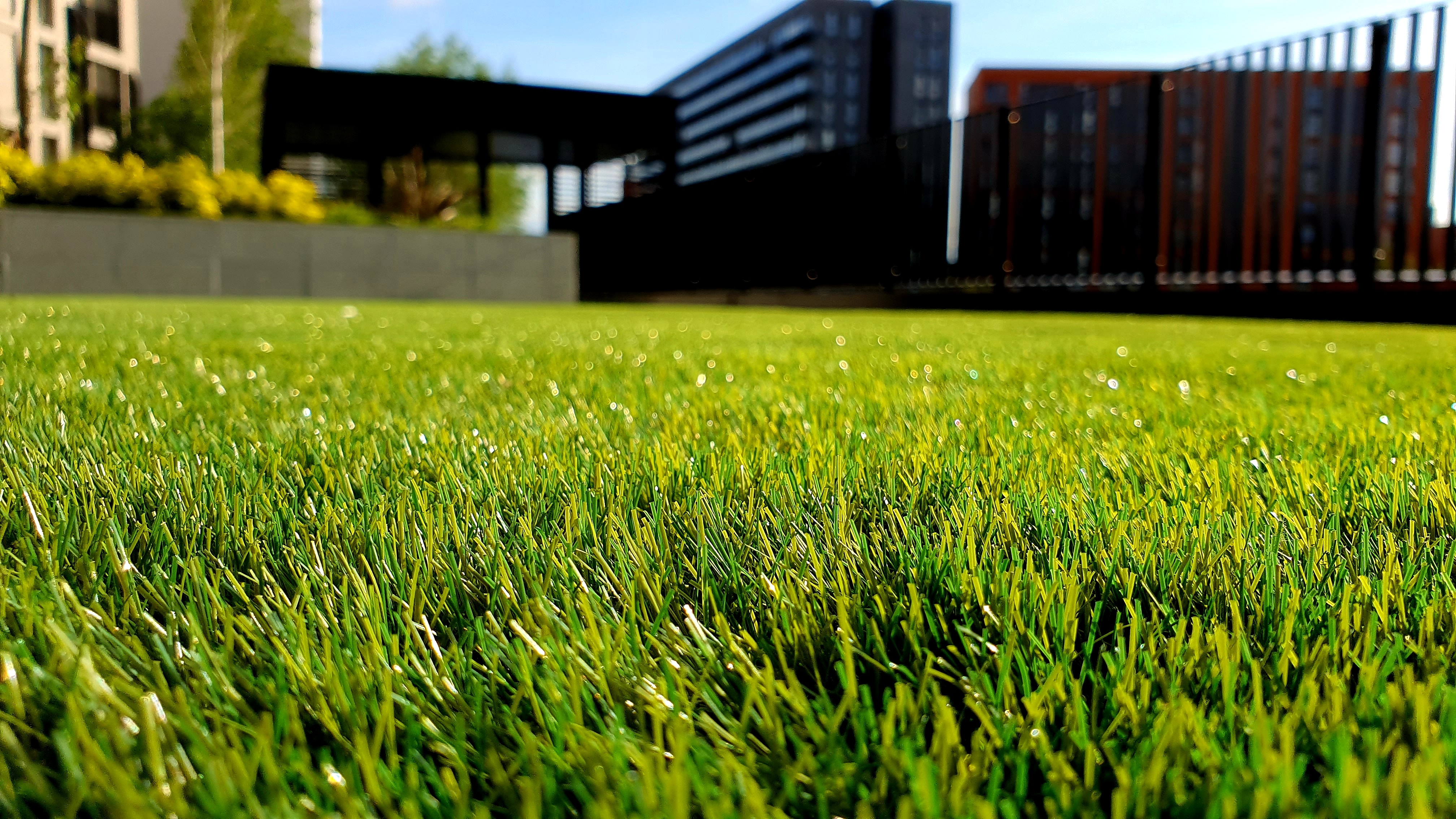The weather of Arizona is hot for many months out of the year. Water conservation efforts are taken seriously and play an important role in the preservation of the state’s climate. When it comes to your backyard and lawn, watering plays a big role. Here are some helpful tips and tricks for how to care for your lawn in the heat.

According to Water Use It Wisely:
Your grass will be healthiest if you completely wet the root zone each time you water. To accomplish this, grass should be watered to a depth of 6 to 10 inches. You should apply about 0.75” (¾ inch) of water each time you irrigate to wet your lawn’s root zone.
Picking landscape plants that need less water (such as aloe vera and cacti) leaves more water for your lawn. Letting your lawn grow three inches before cutting also encourages longer, deeper roots. A way to measure if you have watered enough is to try and push a tool (such as a stake) into the ground. Dry turf is very difficult to puncture. So, when it comes to weeding, it’s best to wait until after you have watered as well.
Watering every day is important in keeping your lawn and plants alive and healthy. Setting a timer is wise, as it is easy to forget you are watering and leave the hose on too long. Having a watering system in place (such as a sprinkler system) tends to use water much more efficiently than watering by hand. It also ensures that watering happens regularly. Some plants might need more water than others, but a well-placed sprinkler system will ensure your lawn gets equal treatment.
Thatching and aerating your lawn are also important steps in keeping grass healthy and strong. Usually twice a year is recommended. You can get this service done by a professional lawn service or do it yourself using rented equipment. Either way, this gives your lawn a boost and can make a big difference.
Arizona soil has a lot of clay and salt, which you can combat using organic fertilizer. Usually some kind of fertilizer is needed to prevent your lawn from becoming yellow and unhealthy. There are several different options for fertilizer. According to Garden Guides, some main options include: potassium fertilizer, nitrogen, and phosphorus fertilizers.
The main goal will be to establish a strong root base which will discourage weeds from growing up in between the blades. A strong base can be cultivated using the above techniques. Green, lush lawns require work but can be so rewarding!
Since 1960, ELA (Electric League of Arizona), has built a reputation of consistent professionals who are industry licensed, insured and bonded, with 100% guaranteed follow-up.
Call 800-368-7767 for a free referral today!
Comments
Post a Comment